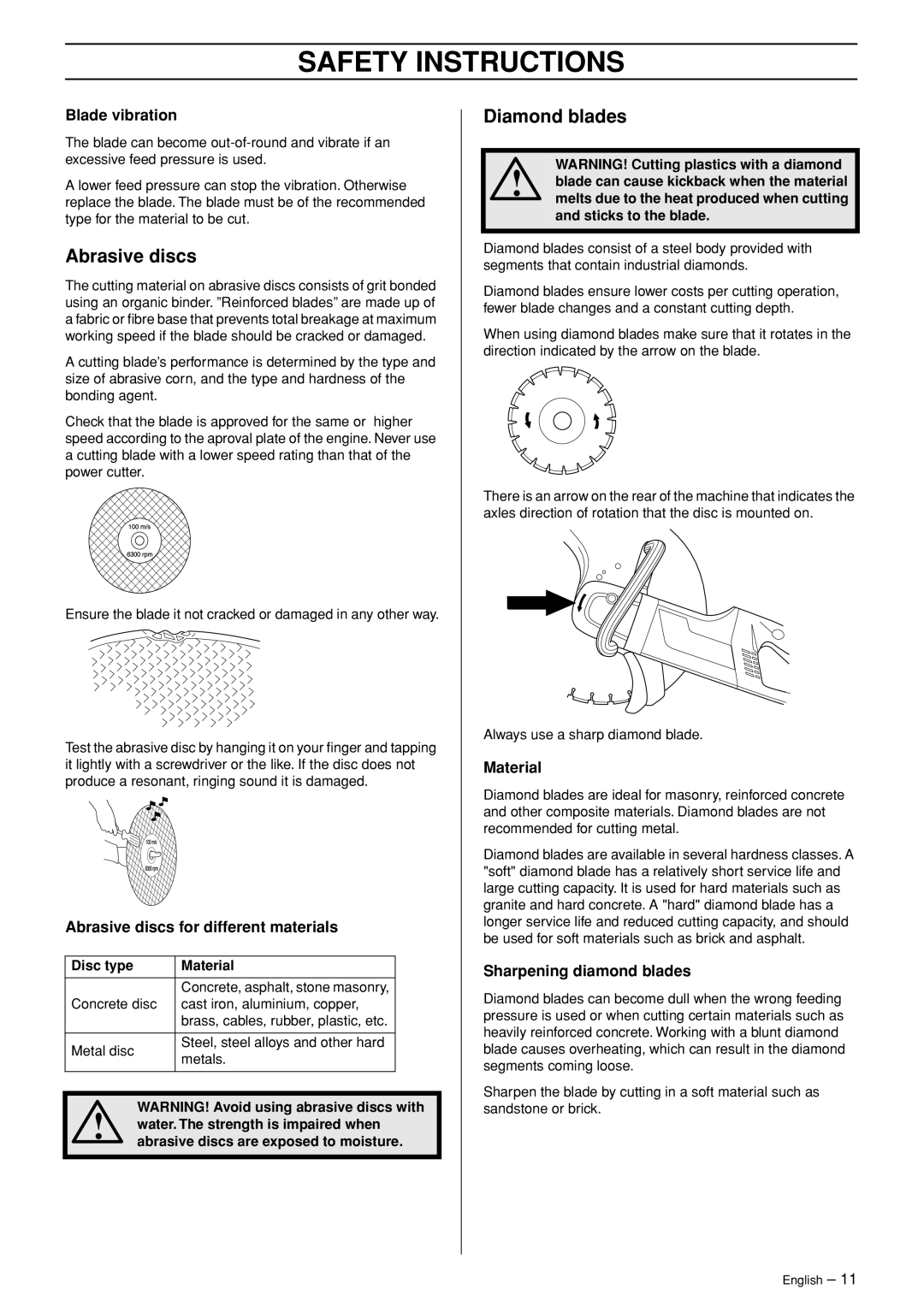
SAFETY INSTRUCTIONS
Blade vibration
The blade can become
A lower feed pressure can stop the vibration. Otherwise replace the blade. The blade must be of the recommended type for the material to be cut.
Abrasive discs
The cutting material on abrasive discs consists of grit bonded using an organic binder. ”Reinforced blades” are made up of a fabric or fibre base that prevents total breakage at maximum working speed if the blade should be cracked or damaged.
A cutting blade’s performance is determined by the type and size of abrasive corn, and the type and hardness of the bonding agent.
Check that the blade is approved for the same or higher speed according to the aproval plate of the engine. Never use a cutting blade with a lower speed rating than that of the power cutter.
Ensure the blade it not cracked or damaged in any other way.
Test the abrasive disc by hanging it on your finger and tapping it lightly with a screwdriver or the like. If the disc does not produce a resonant, ringing sound it is damaged.
Abrasive discs for different materials
Disc type | Material | |
|
| |
| Concrete, asphalt, stone masonry, | |
Concrete disc | cast iron, aluminium, copper, | |
| brass, cables, rubber, plastic, etc. | |
|
| |
Metal disc | Steel, steel alloys and other hard | |
metals. | ||
| ||
|
|
WARNING! Avoid using abrasive discs with
!water. The strength is impaired when abrasive discs are exposed to moisture.
Diamond blades
WARNING! Cutting plastics with a diamond
!blade can cause kickback when the material melts due to the heat produced when cutting and sticks to the blade.
Diamond blades consist of a steel body provided with segments that contain industrial diamonds.
Diamond blades ensure lower costs per cutting operation, fewer blade changes and a constant cutting depth.
When using diamond blades make sure that it rotates in the direction indicated by the arrow on the blade.
There is an arrow on the rear of the machine that indicates the axles direction of rotation that the disc is mounted on.
Always use a sharp diamond blade.
Material
Diamond blades are ideal for masonry, reinforced concrete and other composite materials. Diamond blades are not recommended for cutting metal.
Diamond blades are available in several hardness classes. A "soft" diamond blade has a relatively short service life and large cutting capacity. It is used for hard materials such as granite and hard concrete. A "hard" diamond blade has a longer service life and reduced cutting capacity, and should be used for soft materials such as brick and asphalt.
Sharpening diamond blades
Diamond blades can become dull when the wrong feeding pressure is used or when cutting certain materials such as heavily reinforced concrete. Working with a blunt diamond blade causes overheating, which can result in the diamond segments coming loose.
Sharpen the blade by cutting in a soft material such as sandstone or brick.
English – 11
